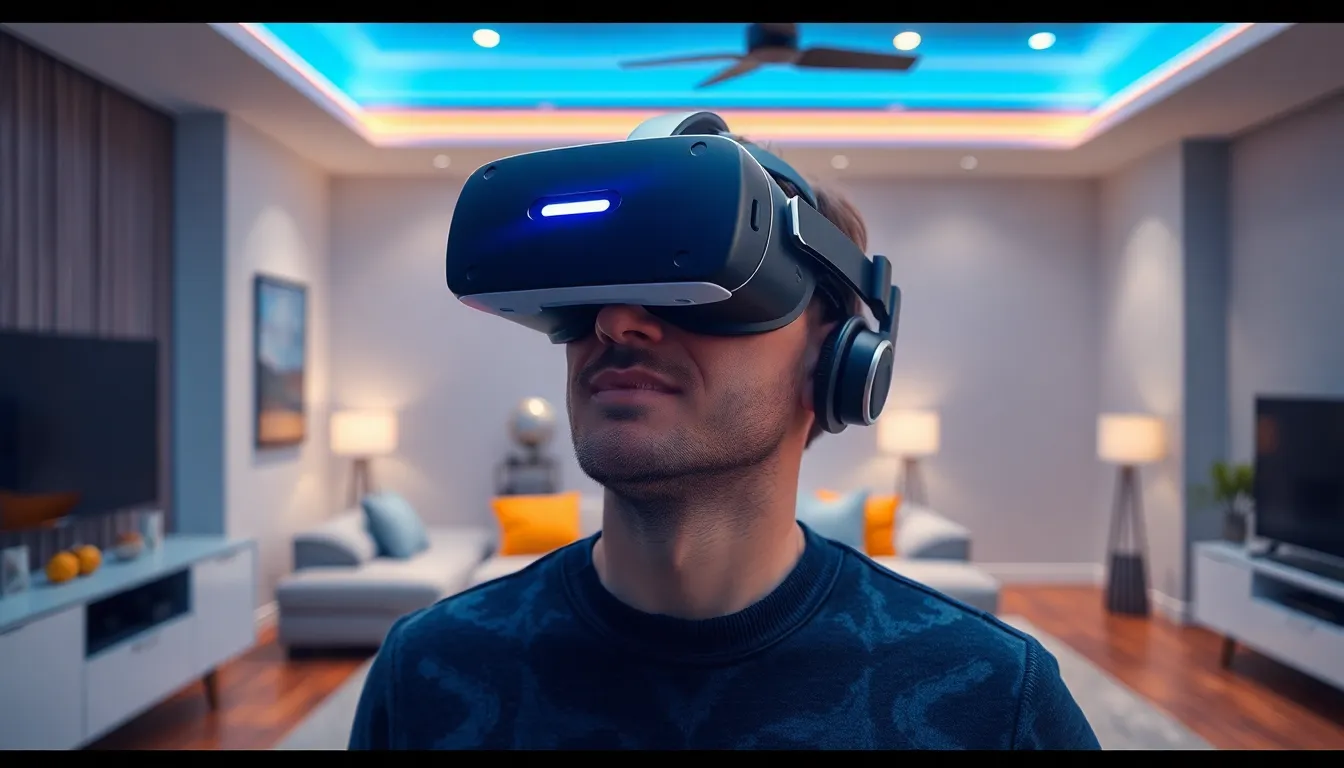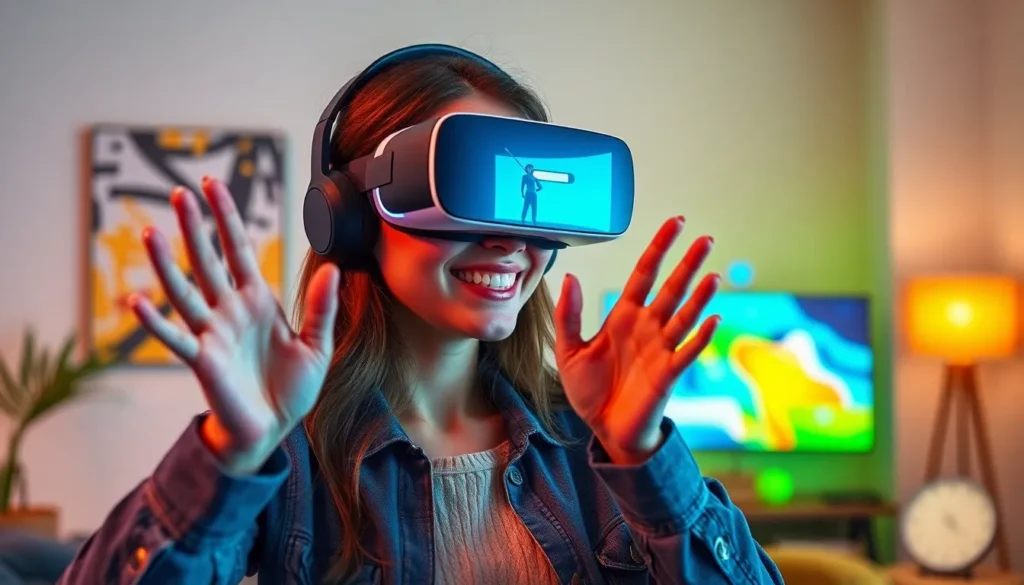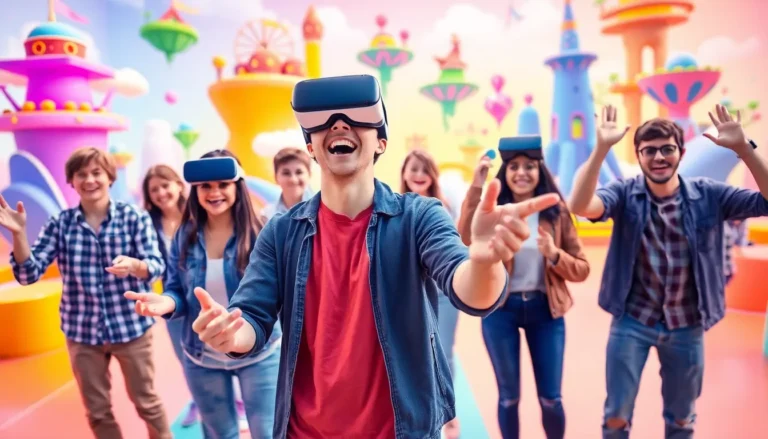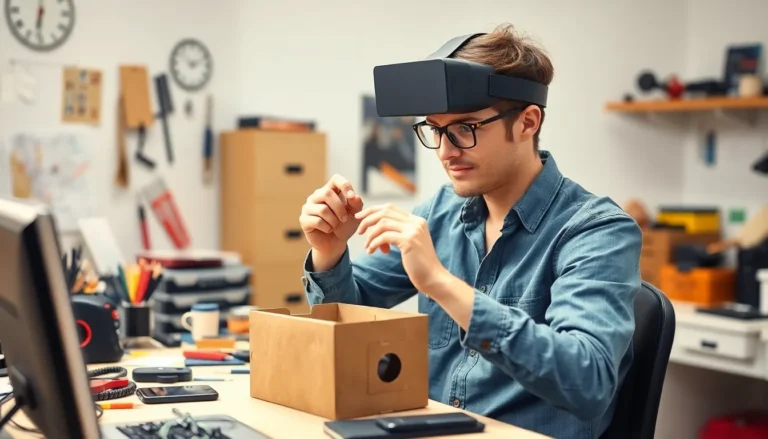Table of Contents
ToggleVirtual reality is on the brink of a revolution. As technology advances at lightning speed, next-gen VR is set to transform how people experience digital worlds. Gone are the days of clunky headsets and limited interactions; today’s innovations promise immersive experiences that blur the line between reality and imagination.
With enhanced graphics, improved motion tracking, and more intuitive interfaces, next-gen VR offers users unparalleled engagement. Whether it’s gaming, education, or virtual travel, the possibilities are endless. As developers push the boundaries of what’s possible, the future of virtual reality holds exciting potential for both creators and users alike.
What Is Next-Gen VR?
Next-gen VR, or next-generation virtual reality, represents a significant leap forward in immersive experiences. This advanced technology utilizes enhanced hardware and software to offer users unparalleled interactions in virtual environments.
Key Features of Next-Gen VR
- Improved Graphics: Next-gen VR incorporates higher resolution displays, often exceeding 4K, providing more detailed and realistic visuals. This upgrade minimizes motion blur and enhances depth perception.
- Advanced Motion Tracking: Next-gen VR systems utilize precise sensors to track head and hand movements with greater accuracy. This feature allows for smoother actions and more natural interactions within digital spaces.
- User-Friendly Interfaces: New VR platforms simplify navigation and interaction, enabling users to engage with content intuitively. Adaptive controls respond dynamically to individual user preferences, ensuring a customized experience.
- Wireless Capability: Many next-gen VR devices eliminate the need for cables, allowing freedom of movement. This wireless design enhances immersion and convenience for users during extended sessions.
- Enhanced Audio Experiences: Spatial audio technology creates a more immersive soundscape, allowing users to perceive directional audio cues, thus enriching the overall sensory experience.
Applications of Next-Gen VR
Next-gen VR has diverse applications across various sectors:
- Gaming: Game developers leverage next-gen VR to create more interactive and engaging gameplay experiences, enhancing user engagement and satisfaction.
- Education: Educational institutions use VR to provide immersive learning experiences, enabling students to explore complex subjects through simulations.
- Virtual Travel: Travel companies offer virtual tours, allowing users to experience destinations from the comfort of their homes. This feature democratizes travel experiences, making them accessible to a broader audience.
Next-gen VR technology continues to evolve, promising revolutionary changes that enhance engagement and interactivity in digital spaces.
Key Features of Next-Gen VR

Next-gen VR technology delivers cutting-edge features that greatly enhance user experiences and interaction in virtual environments. These advances redefine immersion and accessibility across various platforms.
Improved Visuals and Resolution
Next-gen VR headsets feature graphics with resolutions exceeding 4K. This enhancement ensures crisp images, reducing motion blur and pixelation. High dynamic range (HDR) support adds depth and realism, displaying vibrant colors and a wider range of brightness. Additionally, improved field-of-view (FOV) increases peripheral vision and creates a more natural experience. With these enhancements, users experience unprecedented clarity and immersion in virtual worlds.
Enhanced Tracking and Sensors
Next-gen VR incorporates advanced motion tracking and sensor technology. Devices feature enhanced inside-out tracking systems, allowing for accurate tracking of head movements without the need for external sensors. Finger tracking and hand motion detection enable users to interact naturally with virtual objects, increasing realism. These systems provide a smooth and seamless experience, allowing for greater freedom of movement and interaction within the virtual environment. Such improvements make user experiences more engaging and lifelike than ever before.
Next-Gen VR Applications
Next-gen VR applications significantly enhance user engagement across various sectors. The versatility of this technology enables immersive experiences that were once considered unattainable.
Gaming
Gaming leads the way in next-gen VR applications, showcasing stunning graphics and highly interactive environments. Developers leverage advanced hardware to create expansive worlds and intricate gameplay mechanics. Titles like “Half-Life: Alyx” and “Beat Saber” exemplify this evolution, offering players an immersive experience with realistic physics and dynamic worlds. Enhanced motion tracking allows for fluid movement and interaction, elevating multiplayer gameplay and fostering social connectivity within virtual spaces.
Training and Education
Training and education benefit immensely from next-gen VR applications, providing immersive learning environments. Organizations utilize VR simulations for scenario-based training, improving retention and understanding. Medical students practice surgical techniques in lifelike simulations, reducing risks associated with traditional training. Companies like Walmart employ VR for employee training, effectively demonstrating processes and improving customer service skills. Interactive educational modules engage students in ways that traditional methods can’t, transforming classrooms into virtual labs or historical sites.
Healthcare
Healthcare applications of next-gen VR promote innovative therapeutic and diagnostic solutions. Therapists use VR for exposure therapy to treat anxiety disorders and phobias, facilitating gradual exposure to triggers in a controlled environment. Research shows that VR can alleviate pain during medical procedures by distracting patients. Additionally, rehabilitation programs harness VR’s immersive nature to motivate patients during physical therapy sessions, fostering better engagement and outcomes. VR technology also aids medical professionals through virtual conferences, providing access to expert knowledge and collaborative opportunities without geographical limitations.
Challenges Facing Next-Gen VR
Next-gen VR presents significant challenges that could inhibit widespread adoption. Two critical areas to address include costs and content development.
Cost and Accessibility
Next-gen VR technology often involves high costs, which can deter potential users. Premium headsets with advanced features can range from $400 to $1,000 or more, making them inaccessible to many. Additionally, required high-performance PCs or gaming consoles further increase financial barriers, with systems exceeding $1,500 often necessary for optimal performance. The disparity in pricing affects accessibility, leaving low-income demographics at a disadvantage. Further, limited distribution channels may restrict availability, compounding the challenge for interested consumers. Efforts to produce more affordable hardware options or subscription-based models could enhance broader access.
Content Development
Content development for next-gen VR remains a challenge due to technical complexities and resource requirements. High-quality VR experiences require skilled developers, significant time investments, and substantial financial backing. While big companies invest in creating immersive content, smaller developers often struggle to compete due to budgetary constraints. Additionally, the rapid evolution of VR technology can lead to compatibility issues with existing content, making updates and sustainable development critical concerns. As demand for diverse and compelling VR experiences continues to grow, fostering a supportive ecosystem for indie developers will prove essential for creating a rich selection of experiences that cater to various users.
Next-gen VR is on the brink of transforming how users interact with digital environments. With advancements in graphics motion tracking and user interfaces it’s set to redefine entertainment education and even healthcare. As the technology continues to evolve the potential applications are virtually limitless.
While challenges like high costs and content development hurdles remain the future looks promising. As more developers enter the space and innovations emerge the barriers to entry may lessen. This evolution not only enhances user experiences but also paves the way for a more connected and immersive digital world. The journey into next-gen VR is just beginning and it promises to be an exciting ride.







